Autism Acceptance Month Partner Toolkit
April is Autism Acceptance Month. Join us as we raise awareness to promote autism acceptance, celebrate neurodiversity and individual differences, and continue to advance inclusivity and connectedness throughout the community. It’s also a time to renew our commitment to honor the unique lived experiences of people with autism. Working together, we can support young families as well as children and youth with autism as they transition into adulthood, helping each individual reach their full potential.
Hashtags: #CelebrateDifferences #AutismAcceptanceMonth #AutismAwareness #Neurodiversity
Partner with Us
Join us in celebrating Autism Acceptance Month by using your voice and platforms to spread the messages of acceptance, inclusion, and helping connect people to support services—and to one another. This partner toolkit provides free resources, including social media content and links to educational materials on autism. You can share these resources with your friends, family, colleagues, and partners. Examples of how to get involved include
- Posting autism acceptance messages and using the hashtags #CelebrateDifferences, #AutismAcceptanceMonth, #AutismAwareness, and #Neurodiversity on social media.
- Sharing links to digital content, web features, and materials online.
- Using the sample articles to share autism information with communities and healthcare providers in newsletters, emails, and other partner communications.
- Educating parents, educators, and healthcare providers at meetings, health fairs, conferences, and other events.
Support Youth with Autism as They Transition to Adulthood
CDC’s Autism and Developmental Disabilities Monitoring (ADDM) Network is the only collaborative network to track the number and characteristics of children with autism in multiple communities in the United States. CDC encourages partners to use information from the ADDM Network in their local communities and across the country to advance initiatives, policies, and research that help children and families with autism.
The ADDM Network has released a report looking at data collected in 2020 on 16-year-olds with autism. Scientists examined health status and educational services among youth with autism living in different states. CDC has expanded its monitoring of autism from young children to 16-year-olds to identify healthcare needs and to help individuals plan for adulthood.
Find more details and ways you can support youth with autism and transition planning.
Learn from CDC’s Study to Explore Early Development (SEED)
CDC’s Study to Explore Early Development (also known as SEED) was expanded in recent years to learn more about the health, functioning, and needs of people with autism and other developmental disabilities as they mature into adolescence and adulthood. The goal of CDC’s SEED Follow-Up study is to better understand autism as children become adolescents and young adults. This information can be used to improve the health and functioning of individuals with autism as they mature.
Read more about CDC’s SEED Follow-Up study.
Support Early Identification
Support early identification of developmental delays and disabilities, including autism, by promoting tools such as CDC’s Milestone Tracker app. How a child plays, learns, speaks, acts, and moves offers important information about a child’s development. You can play a vital role in early identification by encouraging families to track their child’s development using tools like CDC’s Milestone Tracker app from 2 months to 5 years of age. If families have any concerns, the app can give them information in English or Spanish on things they can do next, such as talking with their child’s doctor, sharing concerns, and asking about developmental screening. Acting early to best support children with autism can make a real difference.
Learn more about the importance of early identification for autism and other developmental delays or disabilities, by visiting: Why Act Early if You’re Concerned about Development?
Use Sample Social Media Content
Looking for content to encourage your networks to get involved in Autism Acceptance Month? We’ve got you covered. Use these messages, graphics, and posts for Twitter, Facebook, and Instagram. Our social media toolkit for partners highlights CDC’s most up-to-date data, materials, and resources.
Use #CelebrateDifferences, #AutismAcceptanceMonth, #AutismAwareness, and #Neurodiversity to join the conversation, and tag us at @CDC_NCBDDD on X (formerly Twitter).
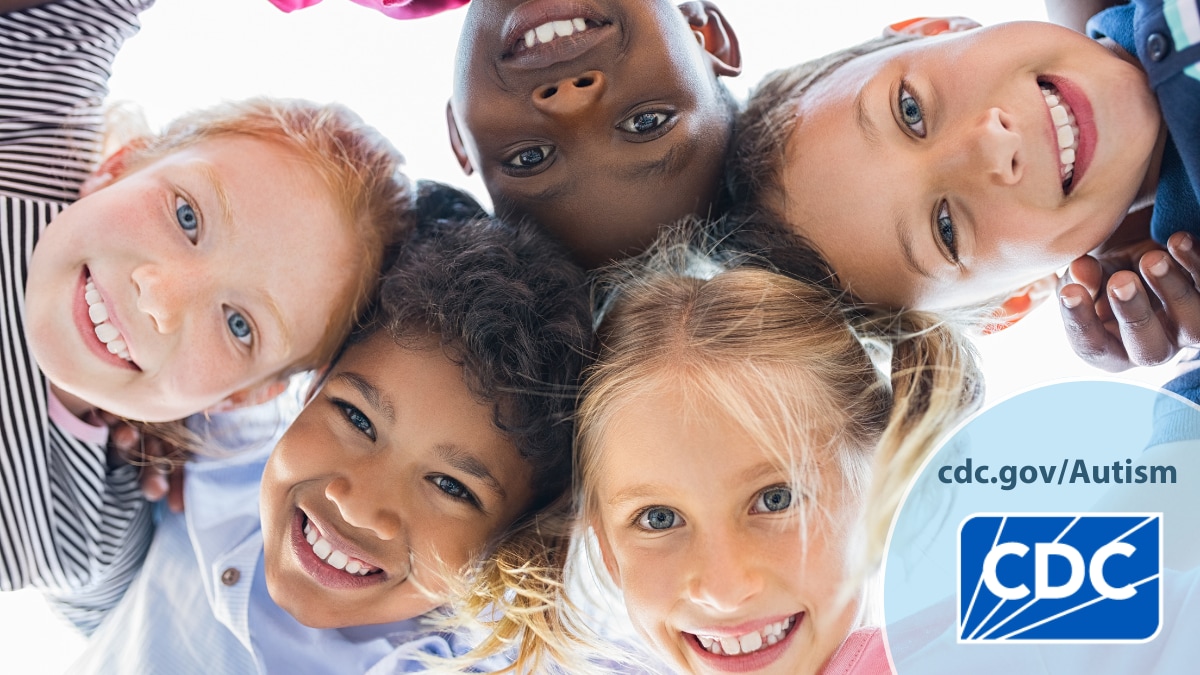
Alt Text: A diverse group of children smiling as they stand closely together in a circle staring downward. Text overlay reads, “cdc dot gov slash Autism.”
This #AutismAcceptanceMonth, @CDC_NCBDDD encourages acceptance, inclusion, and connection to support services—and to one another. Read about CDC’s work in understanding #Autism in children: http://bit.ly/3TC6vtk
#CelebrateDifferences #Neurodiversity
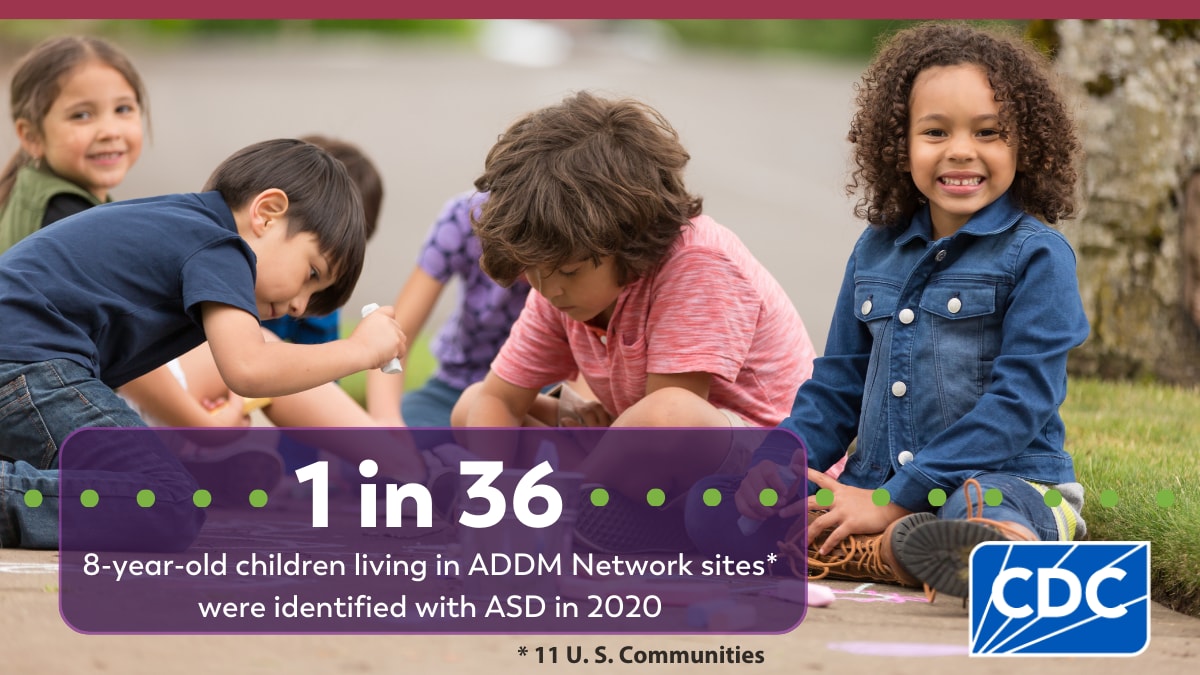
Alt Text: A child sitting on the ground smiling with chalk in their hand as friends in the background play with chalk on pavement. Text overlay reads, “1 in 36 8-year-old children living in ADDM Network sites asterisk were identified with ASD in 2020.” Subtext reads, “Asterisk 11 U.S. Communities.”
Post 1
Join us for #AutismAcceptanceMonth and visit CDC’s website to learn more about the latest in early identification and support:
http://bit.ly/3n77WUl
#CelebrateDifferences #Neurodiversity
Post 2
1 in 36 children were identified with #Autism in 2020. In recognition of #AutismAcceptanceMonth, learn more about the latest findings and resources to help with early identification:
http://bit.ly/3Z9faon
#CelebrateDifferences #Autism
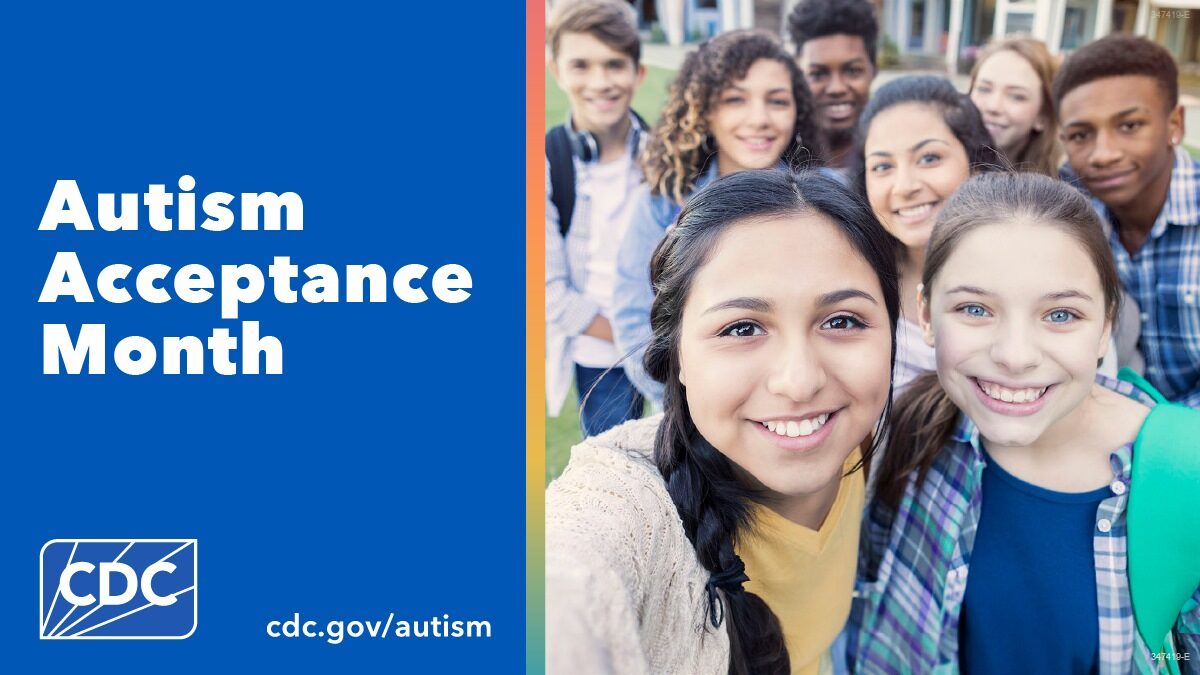
Alt Text: A diverse group of young adults smiling as they stand together outside of a school. Text overlay reads, “Autism Acceptance Month. cdc dot gov slash autism”
Join us for Autism Acceptance Month and visit CDC’s website to discover the latest findings on the health status and educational services among youth with autism:
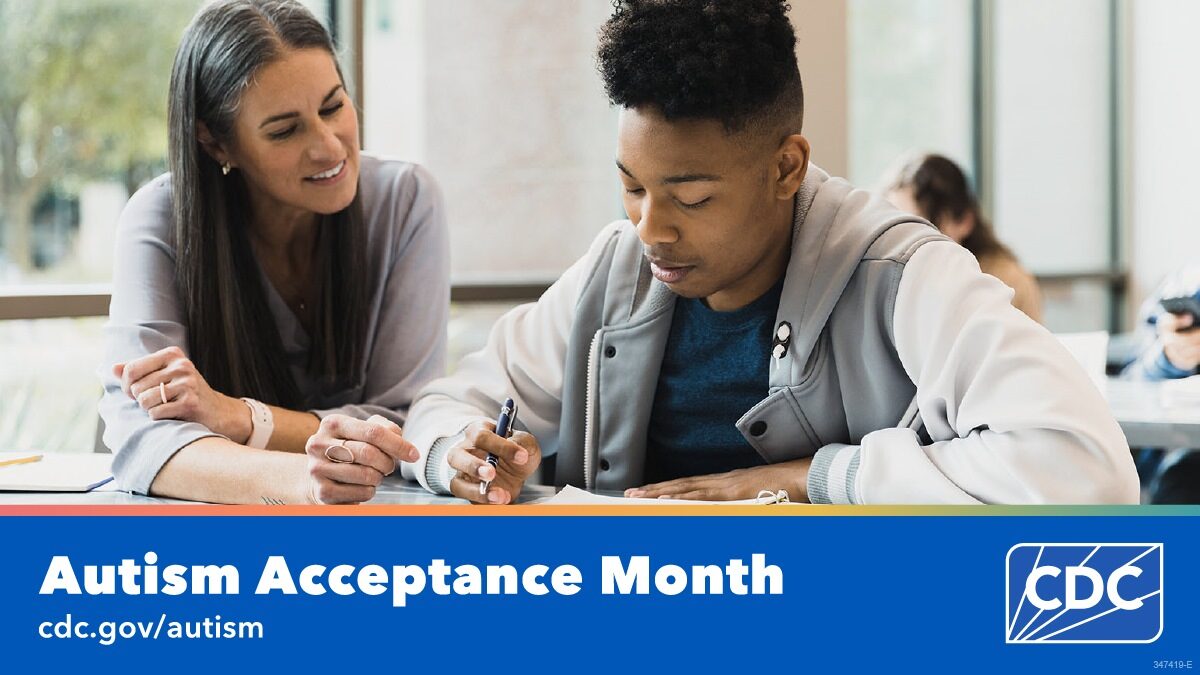
Alt Text: A teacher sits with a high school student who is writing in a notebook during class. Text overlay reads, “Autism Acceptance Month. cdc dot gov slash autism”
Schools: Assessing students with #Autism helps them receive educational and support services. Using the appropriate assessment helps schools ensure they are meeting the needs of their students with autism. Learn more:
#AutismAcceptanceMonth #Neurodiversity
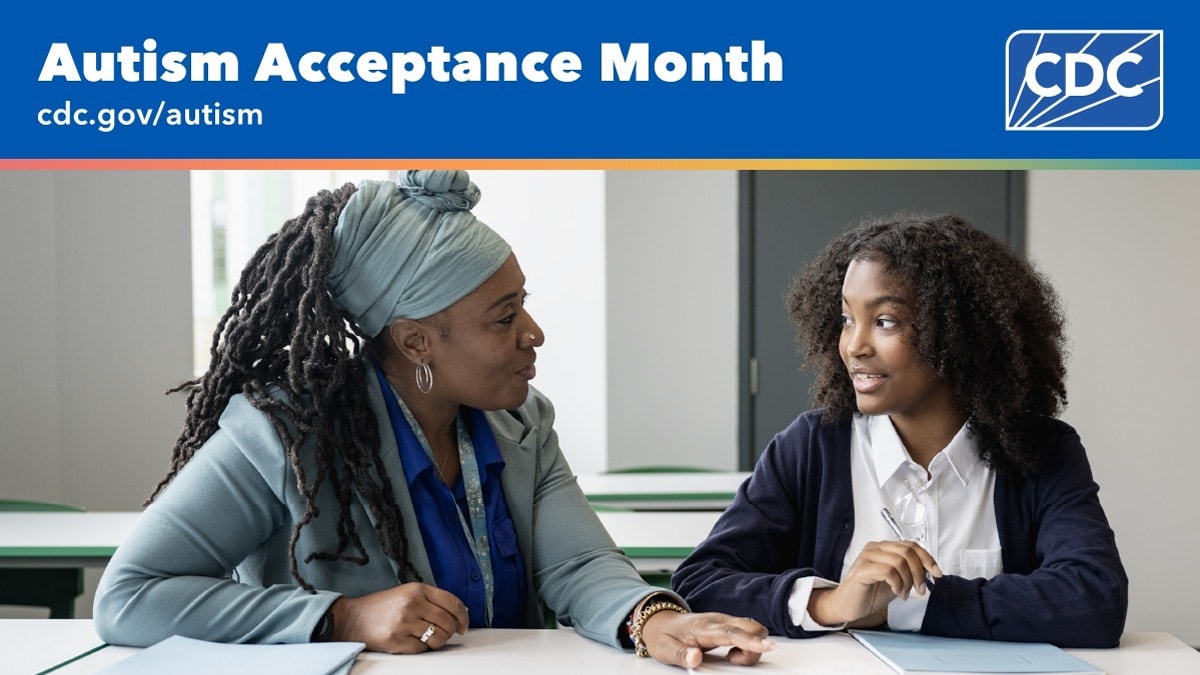
Alt Text: A school nurse talks with a high school student. Text overlay reads, “Autism Acceptance Month. cdc dot gov slash autism”
Mental health conditions are more common among youth with autism than among the general population. School nurses and guidance counselors can help students with autism receive equitable access to mental health services. Schools can screen students with autism, including Black and Hispanic students and those with intellectual disability, for mental health conditions. Read about CDC’s latest findings:
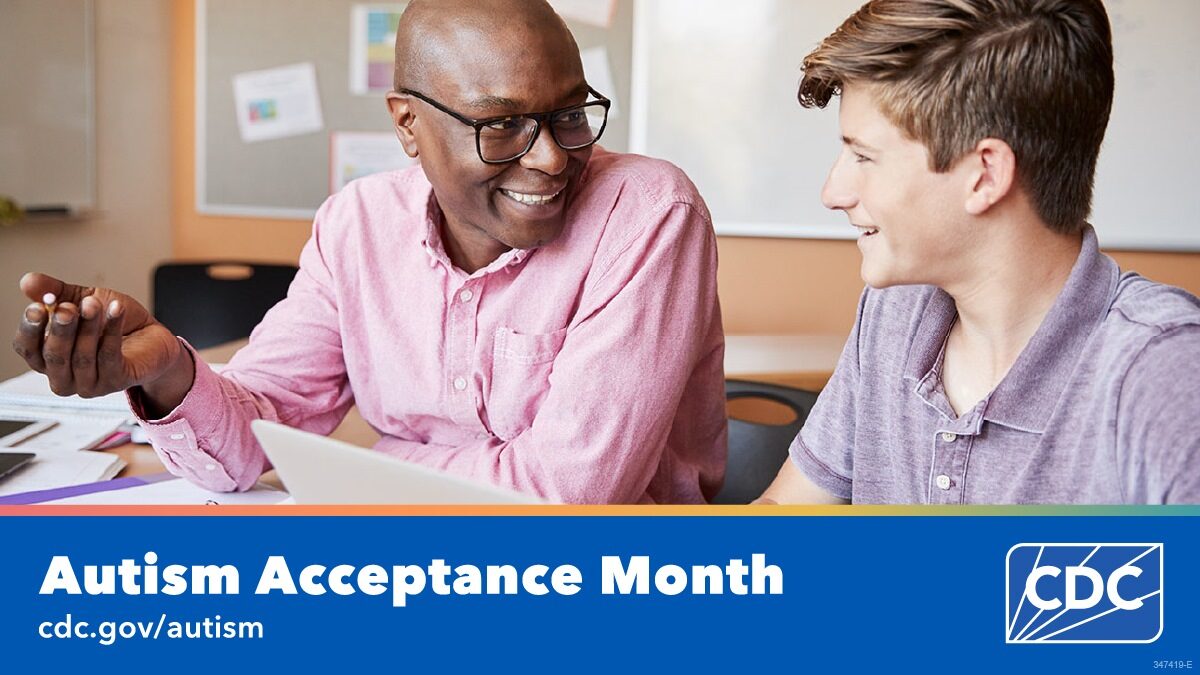
Alt Text: A high school teacher helps a student complete their homework on a laptop. Text overlay reads, “Autism Acceptance Month. cdc dot gov slash autism”
Schools play an important role in preparing students with autism for success as adults. Individual education programs can help you identify ways to support your students with education needs, including independent living skills, if needed. Read more:
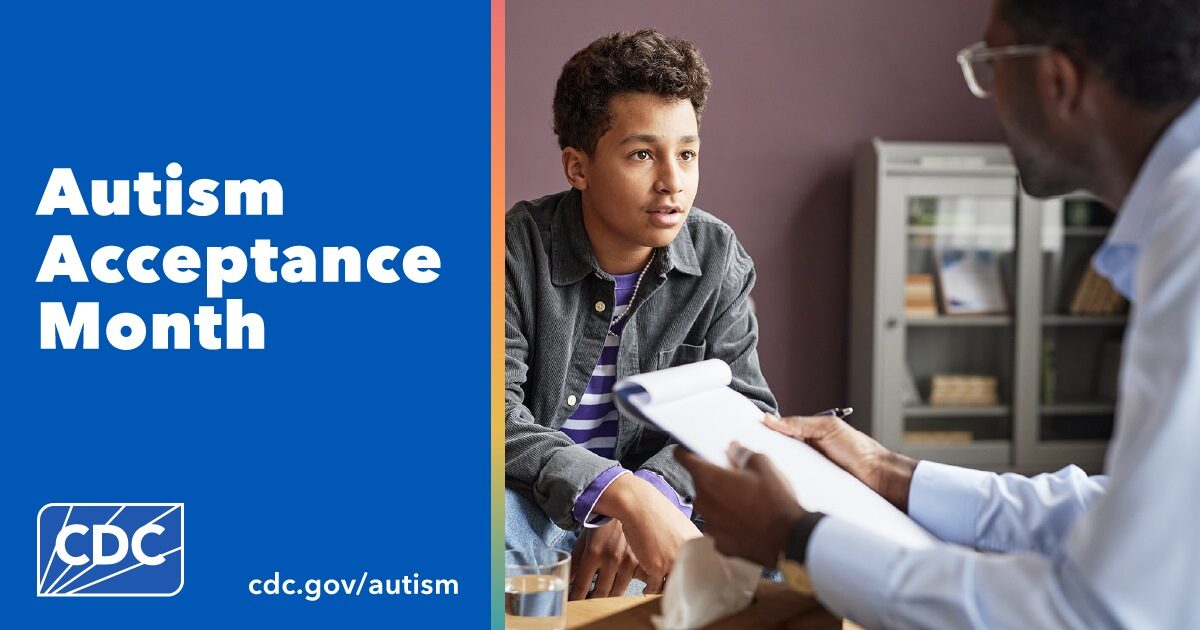
Alt Text: A healthcare provider talks with their young patient. Text overlay reads, “Autism Acceptance Month. cdc dot gov slash autism”
Healthcare providers: Mental health conditions are more common among youth with autism, compared to the general population. You play an important role in ensuring equitable access to mental health services. Screen your young patients with autism, especially Black and Hispanic patients and those with intellectual disability, for mental health conditions. Read CDC’s latest findings:
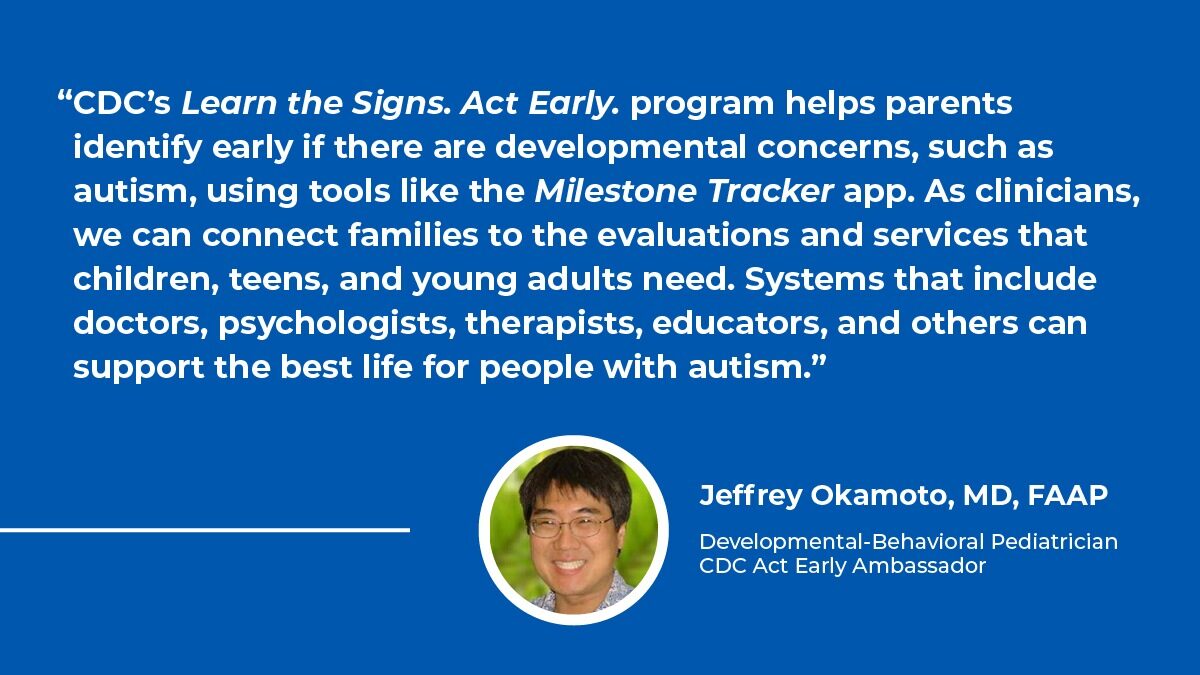
Alt Text: A graphic including quote from Jeffrey Okamoto, MD, FAAP, Developmental-Behavioral Pediatrician and CDC Act Early Ambassador about free Learn the Signs. Act Early. resources and the importance of systems including doctors, psychologist, therapists, and educators to support people with autism.
#HealthcareProviders: Make a difference in the lives of your young patients. Talk to families about the importance of monitoring their child’s development. Share CDC’s free resources, including the Milestone Tracker app:
#ChildDevelopment #ActEarly
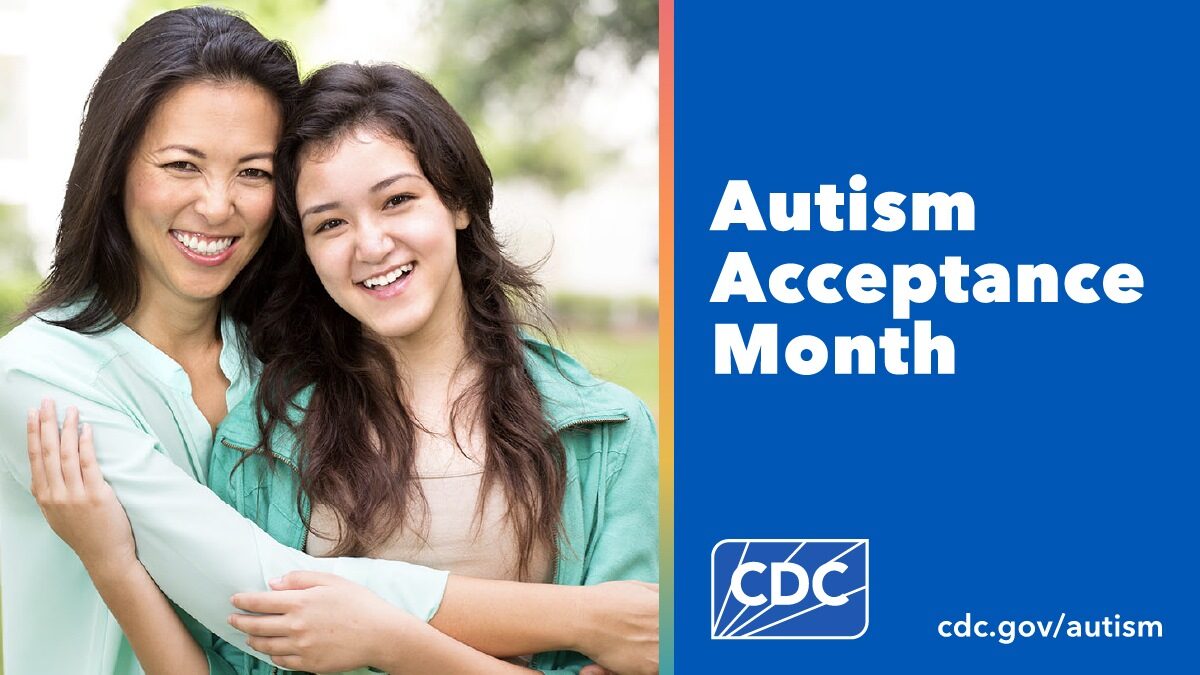
Alt Text: A mother and her teen daughter embrace one another as they stand together smiling. Text overlay reads, “Autism Acceptance Month. cdc dot gov slash autism”
Parents: Do you have a child with autism? You are your child’s best advocate. Work with your child’s school to identify needed services and support that can help your child thrive and prepare them for success as an adult. Read more:
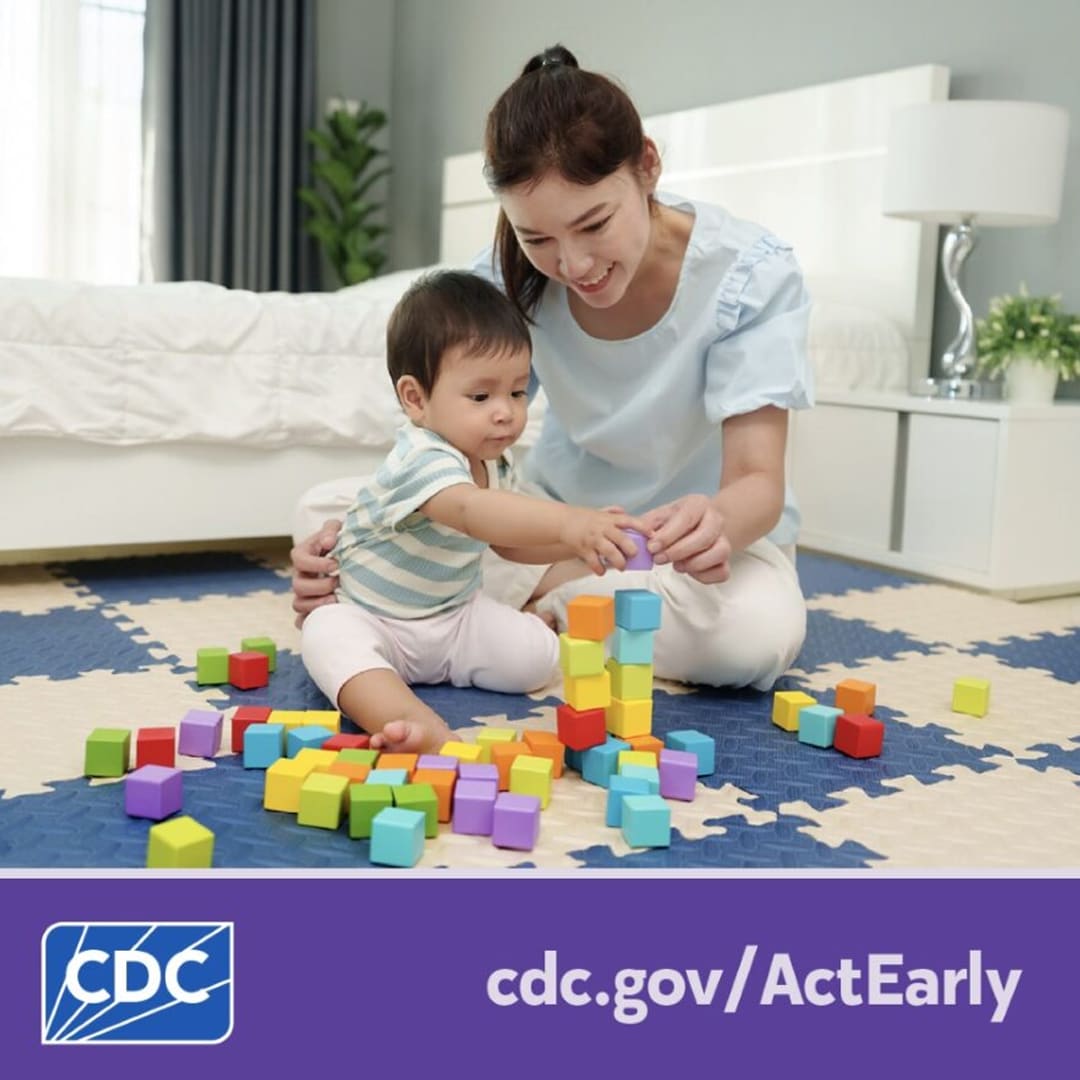
Alt Text: A mother helps her young child play with blocks while sitting on the floor. Text overlay reads, “cdc dot gov slash Act Early.”
Parents: You know your child best. If you have concerns about your child’s development, talk to their doctor. Acting early can make a real difference. Tap the link in our bio to learn more.
#ChildDevelopment #ActEarly
![]()
Alt Text: A person holding a smartphone displaying information from CDC’s Milestone Tracker app. Text overlay reads, “cdc dot gov slash Milestone Tracker.”
Parents: Use CDC’s free Milestone Tracker app to monitor your baby’s or young child’s development and share any concerns with their provider. Tap the link in our bio to get the mobile app and other free resources.
#ChildDevelopment #ActEarly
